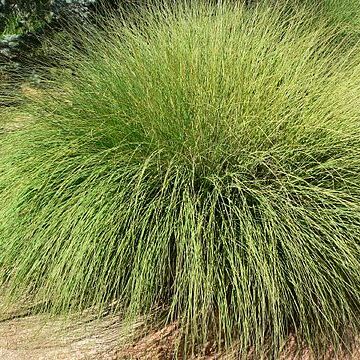Perennial, usually with creeping scaly rhizomes. Culms erect, ascending or decumbent at base. Leaf blades linear to narrowly lanceolate; ligule membranous, sometimes minutely ciliolate. Inflorescence an open or contracted panicle. Spikelets with 1 floret, lanceolate, slightly laterally compressed, rachilla disarticulating above glumes; glumes shorter than or equal to lemma, subequal or the upper shorter, thin, usually 1-veined or the lower veinless, persistent; callus small, obtuse; lemma 3-veined, membranous, dark green mottled with dark gray, laxly pilose toward base on abaxial surface, awned from acute apex or from between two minute teeth; awn straight or flexuose; palea equal to the lemma, membranous. Caryopsis usually fusiform, rarely ellipsoid. x = 10.
Spikelets 1-flowered, the rachilla disarticulating above the glumes; glumes very short to as long as the floret, 1-nerved, obtuse to acuminate, awnless or awned; lemma 3-nerved, usually rather firm, 3-to 5-nerved, mucronate or awned, with a short usually pilose callus; palea as long as the lemma or nearly so. Annuals or perennials with very slender to coarse culms, flat, folded, or in-volute blades, and narrow, dense, or diffuse panicles of small spikelets.

